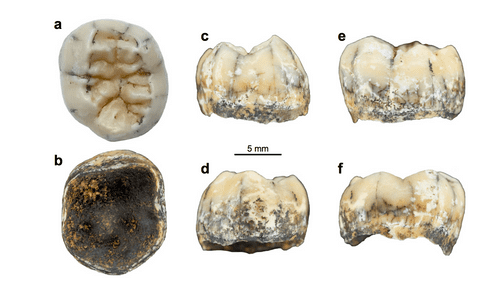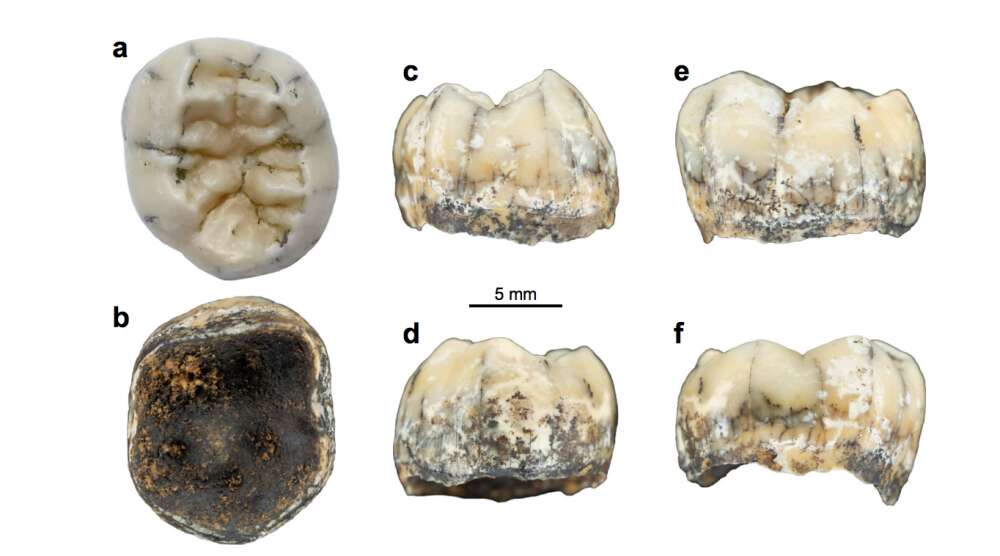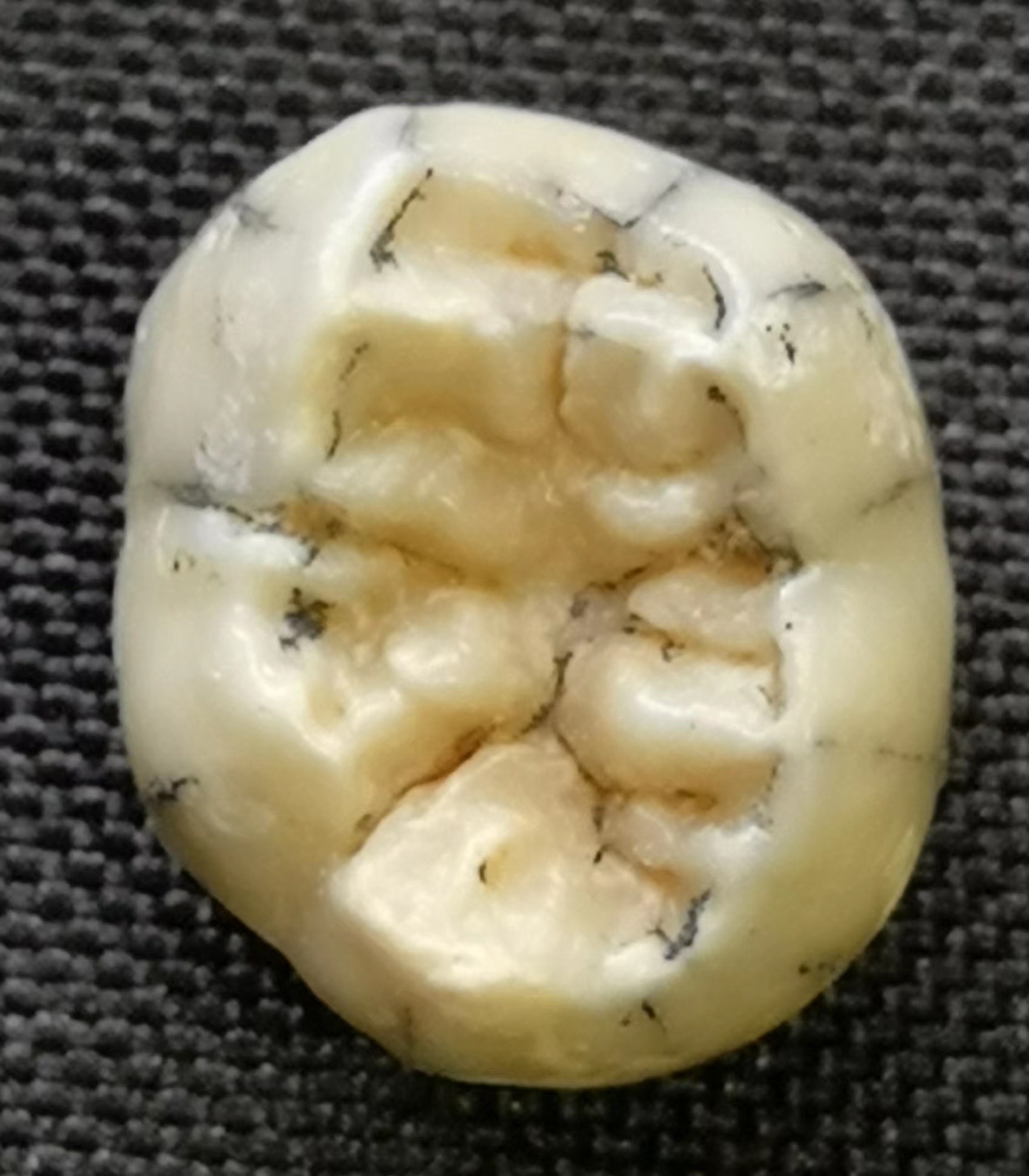
An image of the tooth detailed in the new study, thought to belong to a young female. Image credit: Demeter et al., 2022/Nature Communications
A tooth believed to belong to a mysterious “sister species” of humans — the Denisovans — has been discovered in an unexpected part of the world: Laos in Southeast Asia. This is the first fossil evidence of these early hominins in Southeast Asia, nearly 4,600 kilometers (2,850 miles) from the Denisova cave in Siberia where the first fossils of this species were found.
In a paper published today in the journal Nature Communications , an international team of researchers details the discovery of a fossilized molar found in a newly discovered limestone cave, named Tam Ngu Hao 2, in the Annamite Mountains of Laos.
“We have essentially found the ’smoking gun’ – this Denisovan tooth shows they were once present this far south in the karst landscapes of Laos,” Associate Professor Mike Morley of Flinders University said.
The team was originally looking for evidence of Homo Erectus and early modern Homo Sapiens, remains of which have been found in the area, but the shape and dating of this tooth indicated they were, in fact, dealing with a Denisovan. Further analysis suggested the tooth belonged to a young female who most likely died between the ages of 3.5 and 8.5 years old.
 The tooth shared many similarities to Denisovan teeth found on the Tibetan Plateau, the only other place aside from Siberia Denisovan fossils have been found. Image credit: Demeter et al., 2022/Nature Communications
The tooth shared many similarities to Denisovan teeth found on the Tibetan Plateau, the only other place aside from Siberia Denisovan fossils have been found. Image credit: Demeter et al., 2022/Nature Communications
Based on several dating techniques carried out on the surrounding sediment, it’s estimated the tooth is around 164,000 to 131,000 years old, a time when Denisovans were suspected to have roamed around Asia. The genetic make-up of the modern-day human population strongly suggests that Denisovans lived in Southeast Asia around this time, although physical remains of the species here have previously evaded scientists. After a long search, it now looks like they might have that evidence.
Just five Denisovan remains have ever been fully confirmed: four in the namesake Denisova cave of Siberia and one on the Tibetan Plateau . Due to this scant physical evidence, we still know incredibly little about Denisovans despite being so closely related to them (not to mention our historic interbreeding with them).
“We don’t know what they looked like yet, [we] just know about their genes,” Dr Fabrice Demeter , lead study author and assistant professor of paleoanthropology at the University of Copenhagen, told IFLScience.
“Denisovans and modern humans had a common ancestor by 700,000 to 500,000 years ago, then the non-modern human branch split again by 470,000 to 380,000 and gave the Denisovans and the Neanderthals,” he explained.
“By 200,000 years ago, there were five different species sharing the same territory: H. erectus, H. floresiensis, H. luzonensis, H. sapiens, and the Denisovans, plus a sixth one with the Neanderthals that were confined to Western Europe.”
 The tooth possibly belonged to a young female Denisovan. The remains may have been washed into the cave where it was found. Image credit: Fabrice Demeter (University of Copenhagen/CNRS Paris)
The tooth possibly belonged to a young female Denisovan. The remains may have been washed into the cave where it was found. Image credit: Fabrice Demeter (University of Copenhagen/CNRS Paris)
This latest discovery, if confirmed, sheds some much-needed light on this puzzling species of hominin. Most crucially, it shows that Denisovans had a much-wider range across Eurasia during the Late Pleistocene than current evidence shows and they were able to adapt to a broad range of environments.
“Even if recent results of genetic studies suggested that Denisovans and modern humans met in southern Asia during the Late Pleistocene, we did not expect to actually find a Denisovan tooth in Laos,” Dr Demeter told IFLScience.
“Our study shows that Denisovans lived in a wide range of environments and latitudes, and were able to adapt to extreme conditions, from the cold mountains of the Altai and Tibet to the tropical forests of Southeast Asia. Genetic studies and fossils indicated that Denisovans were adapted to high altitude and cold climates, but now with our discovery, we also know that they were living in warmer and more humid climates and at low altitude.”
The fossil tooth might still have more to offer too. Dr Demeter told IFLScience that they have carried out isotope analysis on the enamel of the tooth with the hopes of revealing the diet of the Denisovans who once lived in what is now Laos. The team is currently awaiting the results with eager eyes.